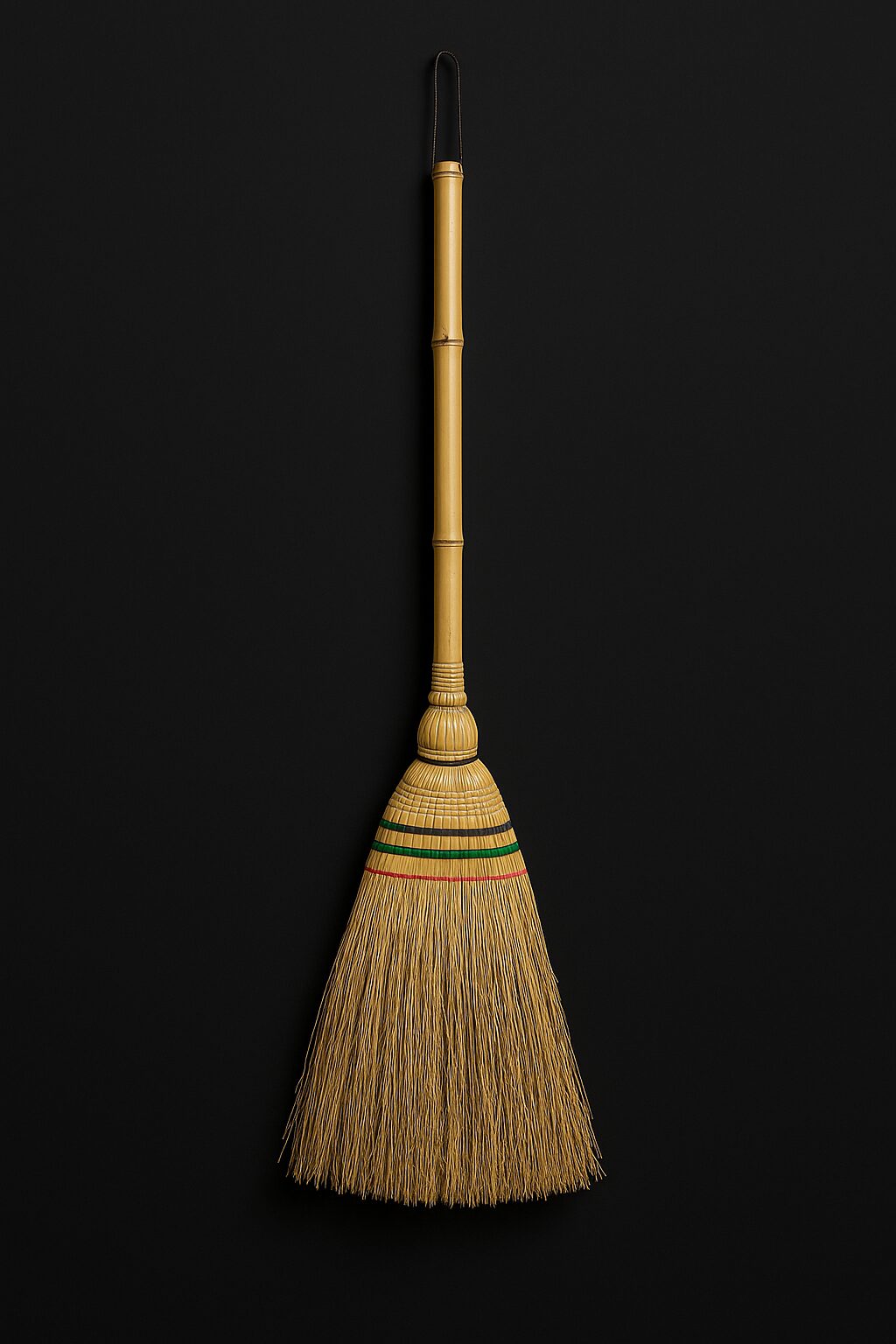By Kokoro Still
An indoor Houki (room broom) that softens dust and frames the day’s first boundary.
A Houki is taken down; in the pause between strokes, Kokoro is softly felt and what the night set down is quietly returned.
Houki (箒) are Japanese bristled brooms.
This piece follows the two-line practice: indoor and entry/outdoor.
Indoors, a soft room Houki (broomcorn or shuro) sweeps tatami and wood or laminate floors.
Storage: for indoor Houki, hanging by the handle so the head hangs free is the rule; a raised stand or closet rail is acceptable only if the bristles do not touch or carry weight. Keep from moisture and direct sun.
Entry/outdoor Houki use stiffer fibers (shida, synthetics, bamboo) for grit and leaves; store on a door-side hook or in a covered shed—if briefly leaned, avoid loading the bristles.
Most homes keep indoor and entry/outdoor brooms separate. Vacuums do most work; a Houki remains for tatami and quiet touch-ups.
Morning, Before Footsteps
On a wall hook, the indoor Houki hangs by its cord, bristles free. I take it down—the loop slips free; the bamboo handle is cool with the morning air.
My hand settles about a handspan below the hanging cord; the balance is felt there. At the grain and along the tatami-beri (tatami border), I begin at the borders.
Between strokes, a small pause lets the air settle. Before the kettle, before speech, I move through the low places—under the zaisu (floor chair), along the lines where light rarely reaches.
Dust loosens, gathers, yields. The room settles.
The Gesture That Carries and Returns
The hand learns a rhythm: draw toward the center, pause, let the air settle; draw again, pause.
As the shaft turns, the binding bands—black, green, red—briefly mark the arc.
Two longer gathers pull the dust into a narrow seam; a short breath, and the room holds.
Between motion and stillness, the edges soften—like a shōji diffusing light—quiet lifted and set down without display.
The Threshold After the Night
At the line where hallway becomes room, fine dust has pooled like low tide. I trace the border once more, drawing it into the pan and leaving a plane where the eyes can rest.
On the pan: a fine igusa (tatami rush) sliver, a short red thread, and one stray hair—the room’s small ledger.
Afterward, the interior boundary holds a clearer edge; the morning is set in place.
What Remains When Nothing Shows
When sweeping ends, nothing obvious stays—no shine, no spectacle—only tatami as it should be.
The Houki returns to its hook. What changed is smaller than a word, yet the room keeps it: a lightness that lingers after care has passed through.
At day’s edge, the Houki returns to its hook; the threshold clears again. In the quiet that opens after the last stroke, Kokoro remains.



Comments